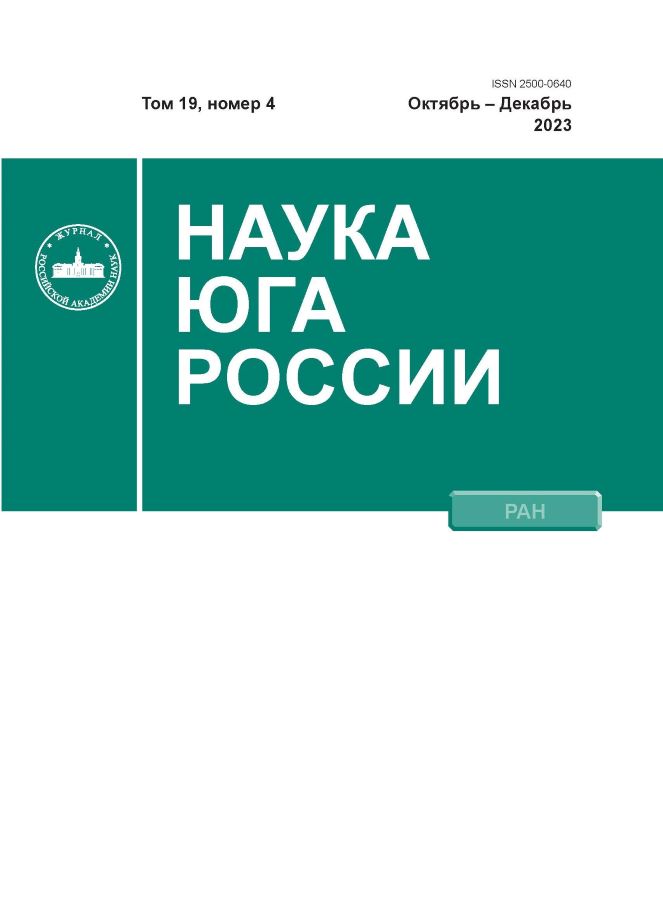Hydrochemical Composition Of Groundwater And Its Application In Fish Farms
- Authors: Matishov G.G1,2, Grigorenko K.S1, Kovalenko M.V1, Ponomarevа E.N1
-
Affiliations:
- Federal Research Centre the Southern Scientific Centre of the Russian Academy of Sciences
- Murmansk Marine Biological Institute of the Russian Academy of Sciences
- Issue: Vol 19, No 4 (2023)
- Pages: 93-102
- Section: Articles
- URL: https://journals.eco-vector.com/2500-0640/article/view/628063
- DOI: https://doi.org/10.7868/S25000640230409
- ID: 628063
Cite item
Abstract
In the last few years, an increasing number of small and medium-sized farms have been involved in fish farming. At the same time, groundwater, deep underground water, and other reservoirs (quarry type) are increasingly used as a water source, which is one of the most important criteria for the success of farms. However, the hydrochemical composition of such water sources differs markedly from the standard ones recommended for use in aquaculture in general and in fish farming in particular. To determine the chemical composition of waters in the Don river basin, samples were taken on the 17th and 19th of May, 2023. Water samples were collected in the fish breeding areas in order to determine the content of salts that adversely affect the development of fish. The studied reservoirs included the Solenoe Lake of the Don-Batyushka fishery complex (Bataysk), LLC OFI flooded quarry (Kuleshovka), ponds in Otradovka and groundwater from a well in the village of Orlovka (Azov district). Waters used in the fishery farms were compared with samples previously selected by the SSC RAS specialists in the wells of the villages Kagalnik and Zaymo-Obryv. New water samples were taken from underground sources of Svinoy Island, as well as natural reservoirs ‒ rivers and ponds (Eya River). The paper compares the chemical composition of fishery waters with the waters of underground sources, as well as the Don and Kagalnik rivers under different hydrometeorological conditions. In the conducted studies of the hydrochemical composition of water, an excess of the requirements for water quality in breeding and growing sturgeon is shown in almost all the main indicators. Some compounds, such as sulfate ion (SO42−) in groundwater can reach more than 62.5% (14‒62.9%) of the total mineralization of water, in some cases the amount of sulfate ions is more than 70 times higher than the recommended norm. The addition of reverse osmosis stations in the early stages of development to the technological scheme of systems with circulating water supply helps to reduce the negative effect.
About the authors
G. G Matishov
Federal Research Centre the Southern Scientific Centre of the Russian Academy of Sciences; Murmansk Marine Biological Institute of the Russian Academy of Sciences
Email: matishov_ssc-ras@ssc-ras.ru
Rostov-on-Don, Russian Federation; Murmansk, Russian Federation
K. S Grigorenko
Federal Research Centre the Southern Scientific Centre of the Russian Academy of SciencesRostov-on-Don, Russian Federation
M. V Kovalenko
Federal Research Centre the Southern Scientific Centre of the Russian Academy of SciencesRostov-on-Don, Russian Federation
E. N Ponomarevа
Federal Research Centre the Southern Scientific Centre of the Russian Academy of SciencesRostov-on-Don, Russian Federation
References
- Пономарев С.В., Баканева Ю.М., Федоровых Ю.В. 2021. Аквакультура. СПб., Лань: 440 с.
- Комлацкий В.И., Комлацкий Г.В., Величко В.А. 2020. Рыбоводство. СПб., Лань: 200 с.
- Козлов В.И., Никифоров-Никишин А.Л., Бородин А.Л. 2006. Аквакультура. М., Колос: 444 с.
- Корентович М.А., Литвиненко А.И., Сироткина Е.А. 2017. Итоги и перспективы развития геотермальной аквакультуры ценных видов рыб юга Западной Сибири. В кн: Сборник статей всероссийской научно-практической конференции «Современные научно-практические решения в АПК». Часть 1 (Тюмень, 8 декабря 2017 г.). Тюмень, Государственный аграрный университет Северного Зауралья: 307–317.
- Шакирова Ф.М., Таиров Р.Г., Калайда А.Э. 2019. Первые результаты выращивания радужной форели (Parasalmo mykiss irideus) на минерализованных подземных водах. Рыбоводство и рыбное хозяйство. 3: 36–43.
- Саваренский Ф.П. 1939. Инженерная геология. М. ‒ Л., ГОНТИ: 494 с.
- Закруткин В.Е., Скляренко Г.Ю., Бакаева Е.Н., Решетняк О.С., Гибков Е.В., Фоменко Н.Е. 2016. Поверхностные и подземные воды в пределах техногенно нарушенных геосистем Восточного Донбасса: формирование химического состава и оценка качества. Ростов н/Д, Южный федеральный университет: 170 с.
- Матишов Г.Г., Григоренко К.С. 2018. Маловодье и роль грунтовых вод в осолонении авандельты Дона. Доклады Академии наук. 483(4): 442–446. doi: 10.31857/S086956520003284-5
- Муллабоев Н.Р. 2007. Влияние повышенной минерализации воды на воспроизводство некоторых промысловых видов рыб в Арнасайской системе озер. Вестник Каракалпакского отделения Академии наук Узбекистана. 1: 21–30.
- Зотин А.И. 1961. Физиология водного обмена у зародышей рыб и круглоротых. М., Академия наук СССР: 317 с.
- Глушанков К.В. 1965. Практические советы рыбоводу. М., Россельхозиздат: 160 с.
- Матишов Г.Г., Дашкевич Л.В., Кириллова Е.Э. 2021. Цикличность климата в Приазовье: голоцен и современный период (XIX–XXI вв.). Доклады Российской академии наук. Науки о Земле. 498(1): 96–100. doi: 10.31857/S2686739721050091
- Матишов Г.Г., Коваленко М.В., Жадан В.А., Емцев А.Г. 2021. Опыт фермерского хозяйства по выращиванию рыбы с использованием грунтовых вод на примере Азовского района Ростовской области и Ейского района Краснодарского края. Ростов н/Д, изд-во ЮНЦ РАН: 56 с.
- ОСТ 15.372-87. Вода для рыбоводных хозяйств. Общие требования и нормы. Утвержден Министерством рыбного хозяйства СССР 10 декабря 1987 г., приказ № 655. 18 с.
Supplementary files









